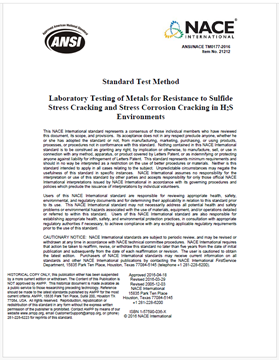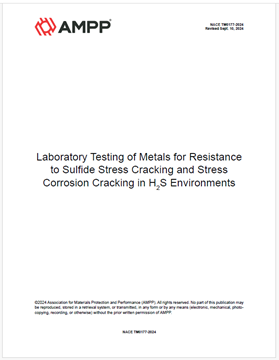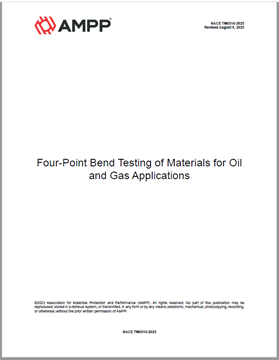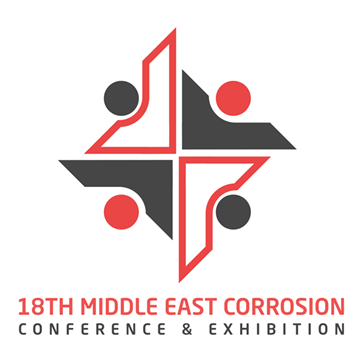Search
Products tagged with 'hydrogen sulfide'
View as
Sort by
Display
per page
Material Capabilities Of Additively Manufactured Alloy UNS N07718 In An H2S-Containing Environment
Product Number:
51322-17938-SG
Publication Date:
2022
$20.00
Mechanistic Insights into Refinery Sulfidation Corrosion
Product Number:
51323-19107-SG
Publication Date:
2023
$20.00
NACE MR0176-HD1976-SG Metallic Materials for Sucker Rod Pumps for Hydrogen Sulfide Environments-HD1976
Product Number:
21303-HD1976
$179.00
NACE TM0177-2016, Laboratory Testing of Metals for Resistance to Sulfide Stress Cracking and Stress Corrosion Cracking in H2S Environments
Product Number:
21212-SG
Publication Date:
2016
$179.00
NACE TM0177-2024, Laboratory Testing of Metals for Resistance to Sulfide Stress Cracking and Stress Corrosion Cracking in H2S Environments
Product Number:
NACE TM0177-2024
Publication Date:
2024
$109.00
NACE TM0316-2016, “Four-Point Bend Testing of Materials for Oil and Gas Applications”
Product Number:
21404-SG
Publication Date:
2016
$179.00
NACE TM0316-2023, Four-Point Bend Testing of Materials for Oil and Gas Applications
Product Number:
NACE TM0316-2023
Publication Date:
2023
$109.00
New Super-Austenitic Grade Alloy 35Mo (UNS N08935) with Excellent Corrosion Properties for Refinery and Petrochemical Industry
Product Number:
MECC23-20125-SG
Publication Date:
2023
$20.00
Novel Application of Nitrate as H2S Control Strategy in Permian Basin Produced Water Storage Ponds
Product Number:
51323-18968-SG
Publication Date:
2023
$20.00
Odor and Corrosion Problems in Wastewater Collection Systems and Treatment Plants: Two Related Issues Requiring Distinctly Separate Control Strategies
Product Number:
41208-435-SG
Publication Date:
2008
$20.00
On The Corrosion Of Commercial Coatings, Surface Treatments, And Carbides For Servicing Equipment Operating In Highly Soured Production Environments
Product Number:
51321-16532-SG
Publication Date:
2021
$20.00












